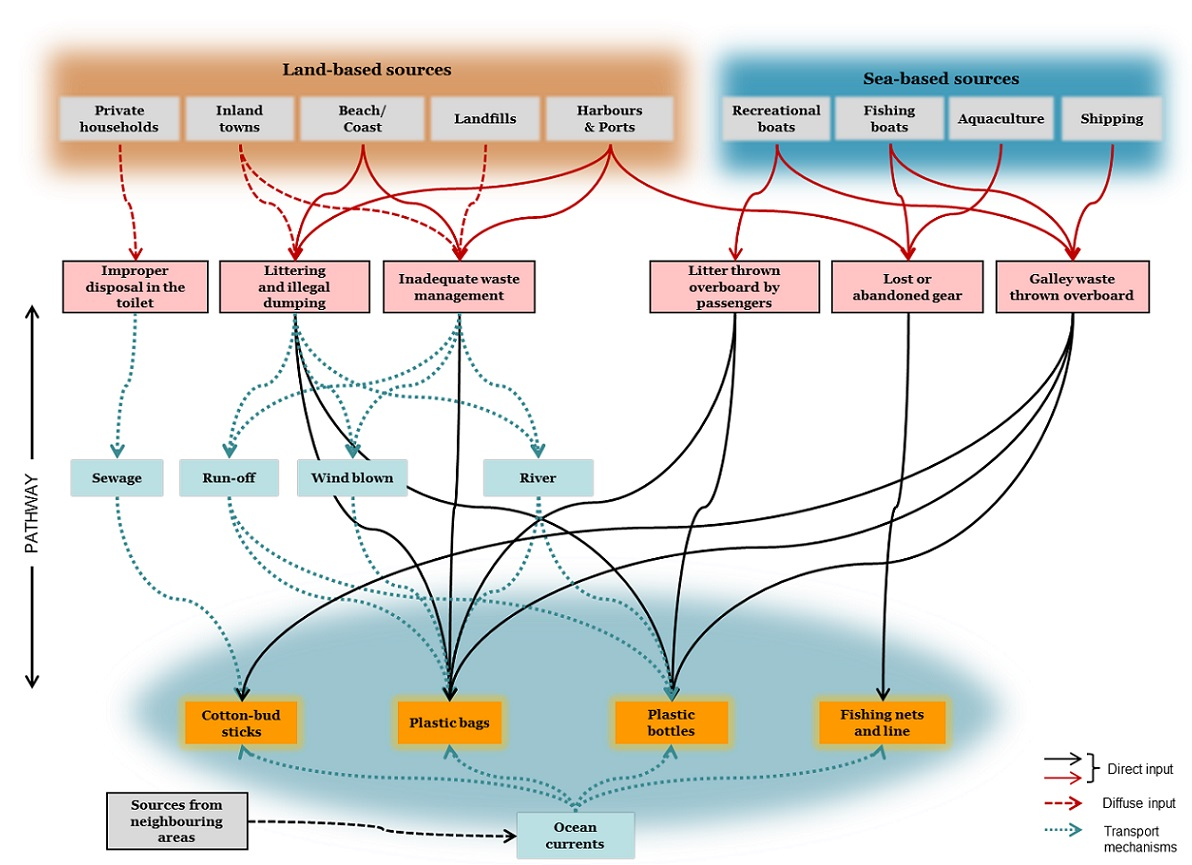Identifying Sources of Marine Litter
Providing methodologies for the identification of litter sources
The reduction of marine litter pollution poses a complex challenge for environmental policies, requiring adjustments in human behaviour as well as in the different phases of the life-cycle of products and access multiple economic sectors. The Marine Strategy Framework Directive (MSFD) requires European Member States to monitor marine litter and implement programmes of measures to reduce its occurrence. |
A crucial step in monitoring and effectively addressing marine litter is the identification of the origin and the pathways that lead to litter entering the marine environment. A given site or region can be subject to litter pollution from a number of sources, which can be local, regional or even distant, as litter can be transported to a specific area by ocean currents and wind drift. |
For this reason, pinpointing the origin of the different items that make up marine litter is a difficult task and will always have an inherent degree of associated uncertainty. The TG Litter has published a report on the methodologies for identification of litter sources – a Matrix Score Technique based on likelihoods, which considers the possibility that specific items originate from more than one source. Furthermore, it presents a series of other parameters that can be used to analyse data-sets, with regard to the use, origin and risk of items recorded in the marine or coastal environments. These can further support decision-making when considering preventive measures. Finally, recommendations to help the process of identification of sources are given, from the early stage of data collection and site characterization to bringing in the knowledge of local stakeholders to better determine where litter is coming from and what needs to be done to prevent it. |  Multiple sea- and land-based sources (grey boxes) of 4 common items of marine litter and their potential pathways of entrance (blue boxes) into the marine environment. (Note: the size of the boxes does not reflect their relative importance). |
